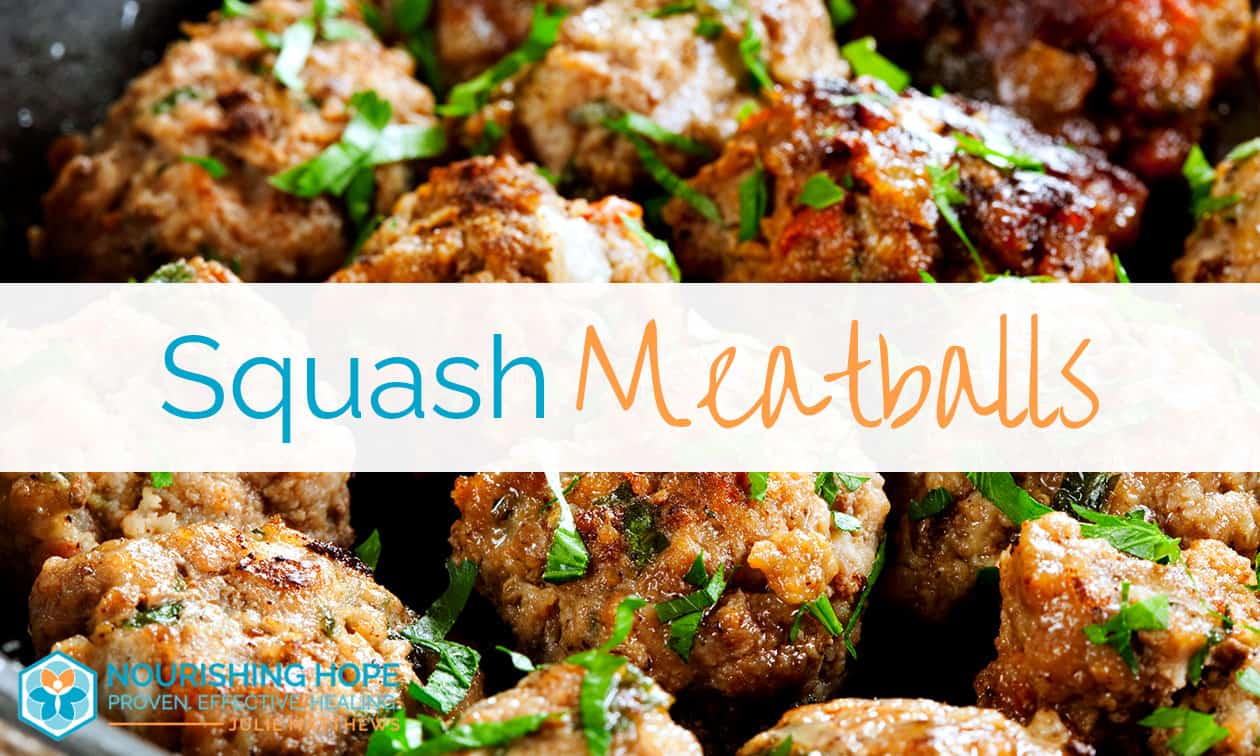
Squash Meatballs (Recipe)


Julie Matthews is a Certified Nutrition Consultant who received her master’s degree in medical nutrition with distinction from Arizona State University. She is also a published nutrition researcher and has specialized in complex neurological conditions, particularly autism spectrum disorders and ADHD for over 20 years. Julie is the award winning author of Nourishing Hope for Autism, co-author of a study proving the efficacy of nutrition and dietary intervention for autism published in the peer-reviewed journal, Nutrients, and also the founder of BioIndividualNutrition.com. Download her free guide, 12 Nutrition Steps to Better Health, Learning, and Behavior.



Thanks for the great recipe! This is my second time making it, my kids gobbled up the first batch. Am waiting on your book, can’t wait to try more when it gets here…
So glad to hear your kids like them!